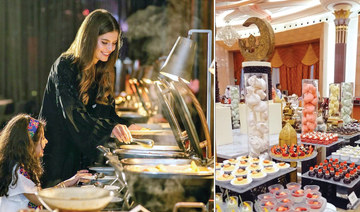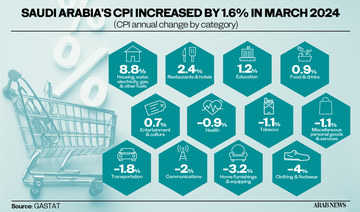SAN FRANCISCO: Google on Wednesday unveiled tools to make augmented reality apps for mobile devices using the Android operating system, setting up its latest showdown with Apple’s iPhone over next-generation smartphone features.
Phone-based augmented reality (AR), in which digital objects are superimposed onto the real world on screen, got a huge boost from the popularity of the Pokémon Go game. The game, launched in the US in July last year, sent players into city streets, offices, parks and restaurants to search for colorful animated characters.
Analysts expected the game to make $3 billion for Apple over two years as gamers buy “PokéCoins” from its app store.
Google’s take on the technology will first be available on the Samsung Galaxy S8 and Google’s own Pixel phone. The company said in a blog post that it hoped to make the system, called ARCore, available to at least 100 million users, but did not set a date for a broad release.
Apple in June announced a similar system called ARKit that it plans to release this fall on “hundreds of millions” of devices.
Google and Apple will jockey for the attention of customers and software developers who will build the games, walking guides and other applications that would make AR a compelling feature.
Many tech industry leaders envision a future in which eyeglasses, car windshields and other surfaces can overlay digital information on the real world. Google and Microsoft have already experimented with AR glasses.
“AR is big and profound,” Apple chief executive Tim Cook told investors earlier in August. “And this is one of those huge things that we’ll look back at and marvel on the start of it.”
Apple and Google have had to make compromises to bring the technology to market.
In Apple’s case, the Cupertino, California-based company decided to make its AR system work with devices capable of running iOS 11, its next-generation operating system due out this fall.
This means it will work on phones going back to the iPhone 6s, which have a single camera at the back and standard motion sensors, rather than a dual camera system found on newer models such as the iPhone 7 Plus or special depth-sensing chips in competing phones. That limits the range of images that can be displayed.
Google initially aimed to solve this problem with an AR system called Tango that uses a special depth-sensor, but only two phone makers so far support it. With ARCore, Google changed course to work on phones without depth sensors.
But the fragmentation of the Android ecosystem presents challenges. To spread its AR system beyond the Galaxy S8 and Pixel phone, Google will have to figure out how account for the wide variety of Android phone cameras or require phone makers to use specific parts.
Google, Apple brace for showdown over smartphone augmented reality technology
Google, Apple brace for showdown over smartphone augmented reality technology

Global airline body calls for release of $720 million in held revenues by Pakistan, Bangladesh
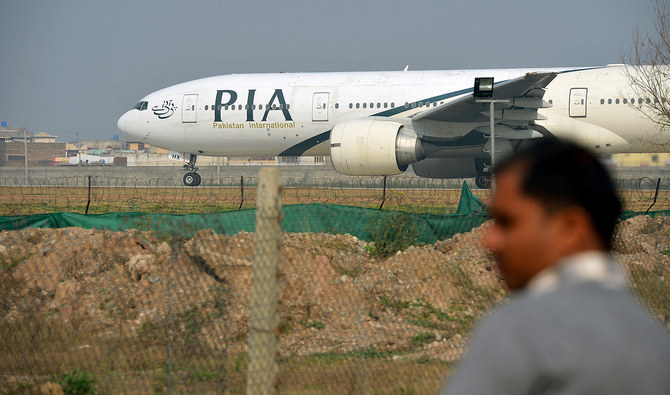
- IATA asks Pakistan in a statement to simplify the ‘onerous’ repatriation process causing ‘unnecessary delays’
- The international organization says airlines are unable to repatriate $399 million from the Pakistani market alone
KARACHI: The International Air Transport Association (IATA) on Wednesday asked Pakistan and Bangladesh to release airline revenues amounting to $720 million, saying the two countries were holding it in contravention of international agreements.
IATA, an international organization representing the global airline industry, asked Pakistan to simplify the “onerous” repatriation process involving audit and tax exemption certificates in a statement, pointing out such procedures caused “unnecessary delays.”
Bangladesh, it said, had a more standardized system, though aviation needed to be a higher central bank priority to facilitate access to foreign exchange.
“The situation has become severe with airlines unable to repatriate over $720 million ($399 million in Pakistan and $323 million in Bangladesh) of revenues earned in these markets,” the statement informed.
IATA’s regional vice president for Asia-Pacific Philip Goh emphasized that the timely repatriation of revenues to different countries was critical for payment of dollar denominated expenses such as lease agreements, spare parts, overflight fees and fuel.
“Delaying repatriation contravenes international obligations written into bilateral agreements and increases exchange rate risks for airlines,” he said. “Pakistan and Bangladesh must release the more than $720 million that they are blocking with immediate effect so that airlines can continue to efficiently provide the air connectivity on which both these economies rely.”
Goh maintained that his organization recognized the two governments were facing difficult challenges, making it necessary for them to determine how to utilize foreign currencies strategically.
“Airlines operate on razor-thin margins,” he continued. “They need to prioritize the markets they serve based on the confidence they have in being able to pay their expenses with revenues that are remitted in a timely and efficient fashion.”
He pointed out reduced air connectivity limited the potential for economic growth, foreign investment and exports, adding such large sums of money involved in the Pakistani and Bangladeshi markets necessitated urgent solutions.
Saudi Arabia to develop 320k new hotel rooms by 2030: Knight Frank
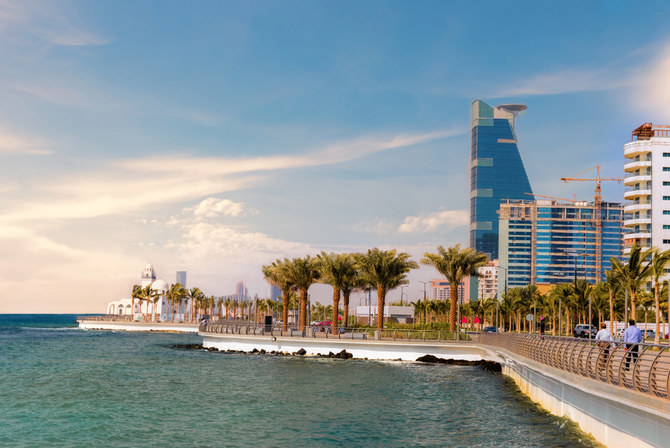
RIYADH: Saudi Arabia is gearing up to expand its hospitality sector by developing 320,000 new hotel rooms by 2030, according to an analysis by global property giant Knight Frank.
The consultancy’s study disclosed that as much as 67 percent of the planned hotel room supply in the Kingdom would fall in the “upscale” or “luxury” categories, referring to 4-star and 5-star accommodations, respectively.
This move aims to cater to the projected surge in tourism, with 150 million domestic and international tourists expected by 2030.
“With a target of welcoming 150 million visitors by 2030—a 50 percent increase from its previous goal—the government is actively exploring various strategies to attract to international travelers,” Partner and Head of Hospitality at Tourism and Leisure Advisory in Middle East and Africa Turab Saleem said.
Saleem noted that this includes the development of cultural and entertainment offerings nationwide, which complement existing attractions like the Jeddah F1 Grand Prix and numerous entertainment seasons.
“Noteworthy additions include theme parks such as Boulevard World in Riyadh, alongside the licensing of 24 additional theme parks by the Saudi General Entertainment Authority over the past year,” he added.
Oil Updates – prices climb amid US stocks decline, Middle East conflict
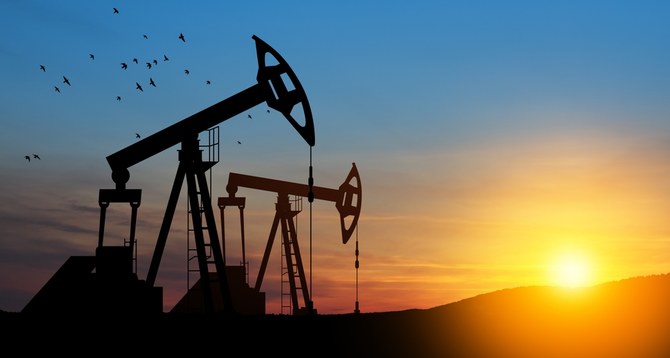
TOKYO: Oil prices extended gains on Wednesday after industry data showed a surprise drop in US crude stocks last week, a positive sign for demand, though markets were also keeping a close eye on hostilities in the Middle East, according to Reuters
Brent crude futures rose 26 cents, or 0.29 percent, to $88.68 a barrel and US West Texas Intermediate crude futures climbed 26 cents, or 0.31 percent, to $83.62 a barrel at 9:34 a.m. Saudi time.
US crude inventories fell 3.237 million barrels in the week ended April 19, according to market sources citing American Petroleum Institute figures. In contrast, six analysts polled by Reuters had expected a rise of 800,000 barrels.
Traders will be watching for the official US data on oil and product stockpiles due at 5:30 p.m. Saudi time for confirmation of the big drawdown.
US business activity cooled in April to a four-month low, with S&P Global saying on Tuesday that its flash Composite PMI Output Index, which tracks the manufacturing and services sectors, fell to 50.9 this month from 52.1 in March.
“This could help convince policy makers that rate cuts are required to support the economy,” ANZ analysts said in a note.
US interest rate cuts could bolster economic growth and, in turn, demand for oil from the world’s top consumer of the fuel.
Analysts were still bullish that any latest developments in conflicts in the Middle East will still support markets, though the impact on oil supplies remains limited for now.
“Overall, crude oil prices are well supported around current levels by on-going Middle East risk premium. On the topside, risk of possible renewed OPEC production increase from Jun will help limit any significant upside,” said head of markets strategy for United Overseas Bank in Singapore Heng Koon How.
“We maintain our forecast for Brent to consolidate at USD 90/bbl by end of this year,” Heng added.
Israeli strikes intensified across Gaza on Tuesday, in some of the heaviest shelling in weeks.
“Recent reports suggest that both Iran and Israel consider the current operations concluded against one another, with no follow-up action required for now,” ING analysts said in a note.
“The US and Europe are preparing for new sanctions against Iran – although these may not have a material impact on oil supply in the immediate term,” they added.
Pakistan Stock Exchange hits record high, breaks 72,000 points in intraday trade
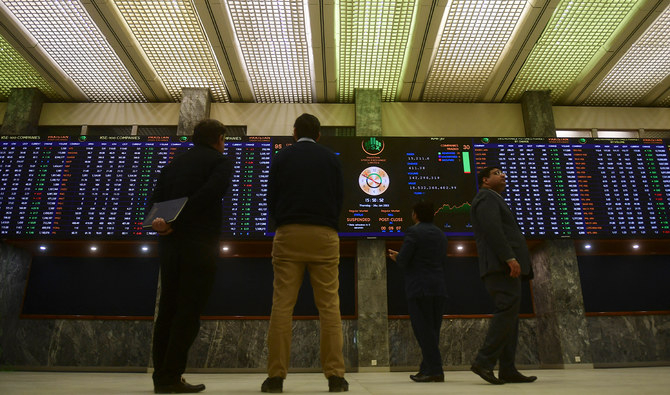
- Analysts say investors expect a significant decline in April inflation data that may lead to a cut in interest rates
- The Pakistani bourse has recently been trading at record highs due to hopes of positive loan talks with the IMF
ISLAMABAD: Pakistan’s benchmark share index breached the key level of 72,000 to trade at a record high of 72,414 points during intraday trade earlier on Wednesday, according to data from the Pakistan Stock Exchange website.
The Pakistani bourse has recently been trading at record highs amid positive sentiment prevailing among investors due to hopes of the country’s successful talks with the International Monetary Fund (IMF) for a new loan program.
The country’s finance minister, Muhammad Aurangzeb, recently visited Washington to hold talks with IMF officials for a long-term bailout facility as Pakistan’s current $3 billion program is due to expire this month.
The finance minister expressed hopes the outline of the new program would soon become visible, adding that the loan would help Pakistan continue with structural economic reforms.
“After a record current account surplus, investors are now expecting a big fall in April inflation data that may result in a cut in interest rates in the coming months,” Sohail Mohammed, CEO of Karachi-based brokerage company Topline Securities, told Reuters.
Pakistan’s benchmark KSE100 index has surged 75.5 percent over the past year and is up 11.5 percent year-to-date.
The equity market is expected to surge further as an IMF delegation arrives in Pakistan next month to determine the contours of the new loan facility.
“We are still hoping that we can get into a staff-level agreement [with the IMF] by the time June is done or early July so that we can move on,” the finance minister said on Tuesday while addressing a news conference in Islamabad.
With input from Reuters
Saudi Arabia’s non-oil exports surge by 4.4%: GASTAT
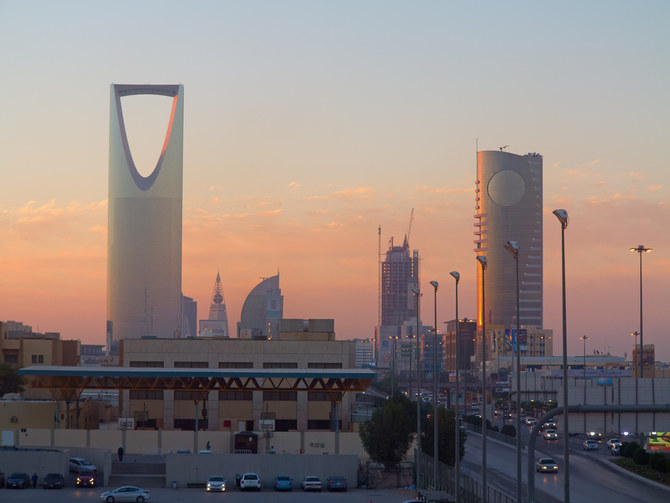
RIYADH: Saudi Arabia’s non-oil exports, including re-exports, saw a surge of 4.4 percent in February compared to the same period of 2023, official data showed.
According to the General Authority for Statistics, the total value of this sector reached SR21.86 billion ($5.83 billion), marking a rise from SR20.93 billion in the same period of the previous year.
The increase in non-oil shipments was driven by an 8.3 percent surge in the exports of rubber and plastic products in February, constituting 24.1 percent of the total exports.
Strengthening the non-oil private sector remains pivotal for Saudi Arabia, as the Kingdom continues its economic diversification efforts aimed at reducing reliance on oil.
The report unveiled a 4.1 percent year-on-year decrease in the Kingdom’s non-oil exports, excluding re-exports, in February. Conversely, the value of re-exported goods surged by 32.3 percent during the same period.
However, GASTAT noted that Saudi Arabia’s overall merchandise shipments decreased by 2 percent in February compared to the year-ago period.
This decline was primarily attributed to a 3.8 percent decrease in oil exports in February compared to the same month in 2023, according to the report.
Similarly, the percentage of oil shipments out of total exports decreased to 77 percent in February from 78.4 percent in the same period of the previous year.
The fall in oil exports was due to the Kingdom’s decision to reduce crude output, aligned with an agreement by the Organization of the Petroleum Exporting Countries, and its allies, collectively known as OPEC+.
In April 2023, Saudi Arabia reduced oil output by 500,000 barrels per day, a decision the Energy Ministry has now extended until the end of December 2024.
Compared to January 2024, the value of overall merchandise exports witnessed a marginal rise of 0.1 percent to SR95.02 billion.
GASTAT revealed that Saudi Arabia’s imports rose by 12.3 percent year on year in February.
On the other hand, the merchandise trade balance surplus decreased by 21.8 percent compared to the year-ago period.
China was Saudi Arabia’s primary trading partner in February, with exports to the Asian country amounting to SR12.57 billion.
India and Japan followed, with SR9.43 billion and SR8.55 billion in exports, respectively.
South Korea, the UAE, and Poland were also featured among the top destinations for Saudi exports, along with Egypt, the US and France.
China also held the top spot on the import side, accounting for 19.9 percent – or SR12.58 billion – of exchanges in February.
According to the report, King Abdulaziz Sea Port in Dammam was ranked the highest entry point for goods into Saudi Arabia, constituting 26.7 percent of the overall exports.





